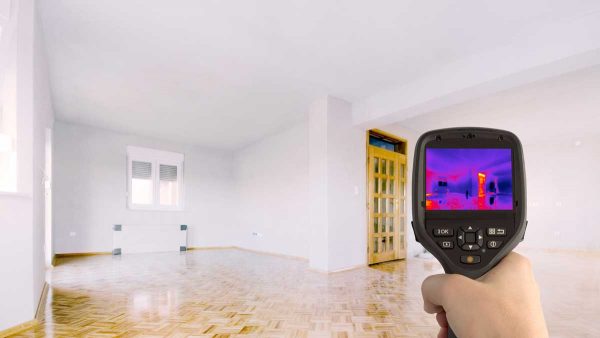How to find roof and building leaks quickly

There’s a hidden killer lurking around your commercial building. It goes hunting around the exterior, probing the roof, the doors, the windows and every nook and cranny hunting for a way in. When it discovers an entry point, it strikes, shredding its vulnerable prey and leaving devastation in its wake.
That killer is water.
Water damage is one of the most costly and common causes of building damage, and it’s easy to get caught by it. If there’s a leak in an area that’s not frequented or open you might go years without realizing your structure is tearing itself apart around you.
If you know what to look for, though, you can stop it before it starts.
Moisture meter
A moisture meter is designed to measure relative amounts of moisture in building materials. Most are calibrated to wood, but some can be used on EIFS, stucco, sheetrock, concrete and more.
A building inspector uses a moisture meter to probe possible trouble spots and determine whether water has made its way in. At times this may be possible with the moisture meter by itself, but if there’s a particularly interesting trouble spot it may require more work, probing or diagnosis. Moisture meters also can’t detect everything, so a clean sweep doesn’t always mean a clean bill of health.
Infrared thermography
Moist areas differ in temperature to their surroundings. This allows that temperature difference to be measured, which is how infrared thermography works.
If you have a roof leak or an underfloor leak, this method will work better than traditional moisture-testing methods. The infrared camera will pick up details that a moisture meter or the naked eye might not, helping you discover problems you might not ever know existed.
Exterior spray testing
If you’ve ever tested a tire for leaks using soapy water, you’re probably familiar with the general principle of exterior spray testing. Some leaks may only become visible when it rains or under other specific conditions, and without simulating the conditions of the leak it’s impossible to find the hole. Testing the exterior means spraying water under closely monitored, carefully measured conditions. Permeability and absorption can be tested this way, and even more serious direct leakage can be discovered with spray testing.
If you’re dealing with water damage or it’s been a while since you got tested, it’s time to call in a professional. JK Industries has the expertise and the experience to stop leaks before they can cause too much damage. Give us a call today to find out how we can help.
